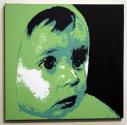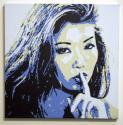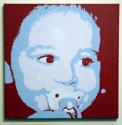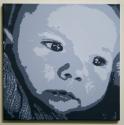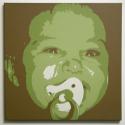
Learn foreign languages while watching your favorite YouTube videos!
The Language learning app is a handy set of tools that will help you improve your language skills by accessing subtitles, a built-in dictionary, and saving words and phrases you want to learn to revise.
Learning foreign languages will be an interesting and exciting experience for you!
Biography: After traditional secondary studies in Charleroi, Nicolas Ghesquière, a Belgian artist, turned to Plastic Arts. His teaching started at the “75” in Brussels and continued at the “Institut Supérieur Saint-Luc” in Liège where he was also formed to artistic printing techniques such as serigraphy, lithography, engraving and off-set. But the lack of freedom in the process of creation turned him away from the world of Graphic Arts for a more personal process. He then devoted himself during nearly years (2000-2004) to the development of an association dealing with young artists called “Le Laboratoire” (http://web.mac.com/nicolas_ghesquiere/le_laboratoire/Bienvenue.html) and the management of its art-gallery.
Lately, he turned back to a more personal reflection and his work is now based on two major axis.
The first one is tending towards a societal art which, by “distanciation” brings the spectator to a more critical look on himself and society. Nicolas Ghesquière wants to involve directly the spectator in the exhibition, to confront him physically with his work (whether it is by the means of mirrors or cardboards…) make him participate and make him feel things rather than just appreciate esthetically what he sees. He invites us to introspection where portrait is used as a tool and not as an end in itself. The portrait leads to reflection and judgment rather than identification; they are meant to tell something rather than incarnate.
The second one is tending towards a perfect technique. The artist likes to push the details at most with each technique to mislead the spectator (is it a printing or a painting? A photography or a drawing?) and bring him more easily to self interrogation. Furthermore he uses the reproduction or the division of portraits to provoke a feeling of perplexity which launches the intellectual process.
Indeed, the reproduction of identical portraits worked differently (different medium or color) makes us aware than the same image (or person) can provoke different feelings. Also, the division of a portrait in zones of different colors allows us, such a kaleidoscope, to see a person through the spectra of the various emotional colors.
The photographs for the portraits are, il general, taken by the artist before being treated by computer (decomposition of the light in various tones of grey). The obtained images are screened, drawn and then accurately painted with the colors of his choice.
While pursuing his pictorial exploration, Nicolas Ghesquière, now goes out of the frame to experiment the 3rd dimension through Land-art and Plexisglas@ installations.
Country: Belgium
E-mail: ghesquiere_nicolas@hotmail.com
Site: Ghesqui?re Nicolas, artiste plasticien










